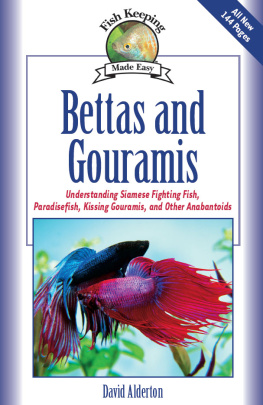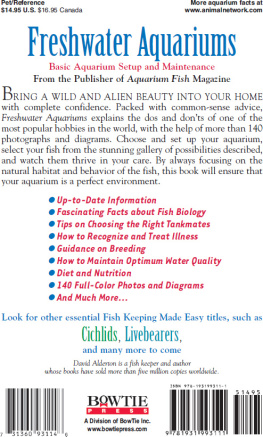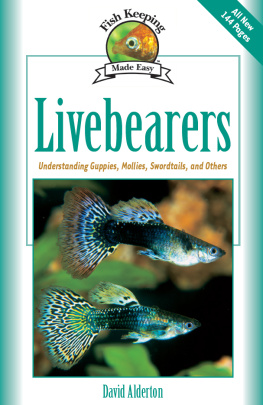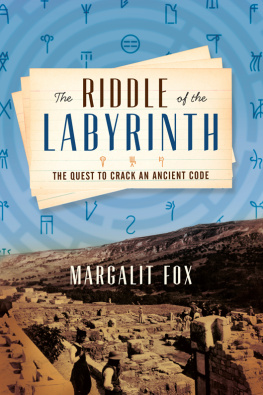

Nature and Nurture
When bettas and gouramis were first kept is unknown. What is certain is that these fish were popular in their Asiatic homeland for centuries before they became known in the West. Paradisefish (Macropodus opercularis), the hardiest member of the group, may have been seen in London during the mid-1600s, with fish corresponding to their description being recorded there by the famous diarist Samuel Pepys.
There is a considerable range in size in the anabantoids, as these fish are collectively known, from the tiny licorice gourami (Parosphromenus parvulus), measuring barely 1.5in (4cm), up to the giant gourami (Osphronemus goramy), which can grow to 28in (70cm) and may weigh more than 15lb (7kg). The ease with which these large fish can be bred and reared, under what would normally be considered fairly poor environmental conditions, led to the start of the fish farming industry in Asia.
Initial human interest in anabantoids was therefore as food. This was especially significant in a tropical region of the world, well before the development of refrigeration. Fresh fish would spoil readily in the heat, but an essential component of the biology of this group meant that this factor was less significant in their case, making them an attractive proposition to rear commercially. In contrast to most other fish, anabantoids are able to breathe air directly, thanks to their labyrinth organs. As a result, they could be transported alive out of water, arriving in a relatively fresh state at their destination.

Paradisefish (Macropodus opercularis) are among the most easily kept bettas, and make an excellent introduction to this group of fish.

Many bettas and gouramis are found in the wild in shallow stretches of water, such as this stream in southern Thailand. Throughout this book, insights into natural fish behavior are emphasized. Understanding how a fish lives in the wild leads to a better understanding of how it should be looked after in the aquarium.
Fish keeping for pleasure also features prominently within Asiatic culture, as shown by the domestication of other species such as goldfish and koi in this part of the world. Smaller labyrinth fish have been bred there in a wide range of fancy forms, notably the Siamese fighting fish (Betta splendens).
It was soon obvious that it was not only their appearance that could be modified, leading to the development of much more elaborate fins, but also their temperament. Their level of aggression could be increased through selective breeding. This led to the creation of fighting competitions, a tradition that continues to the present day in Thailand, with large amounts being wagered on contests between individual fish. This particular betta remains the most widely kept anabantoid today, both in its homeland and also in the U.S., where it consistently ranks in the most popular ten species out of all tropical aquarium fish.
With hundreds of years of selective breeding having taken place, it is now impossible to unravel the original distribution or even the appearance of the ancestral form of these fish. The first Siamese fighting fish reached Europe alive in 1894 and were bred by their French importer soon afterward. Since those early days, a huge commercial breeding operation has developed in Southeast Asia, in centers such as Singapore, where these and other anabantoids are raised in massive numbers for the aquarium trade worldwide. There is also a significant commercial farming of members of these ornamental fish in Florida, where the U.S. aquarium fish industry grew up after the end of World War II in the late 1940s.
Further Reading
Alderton, David. The International Encyclopedia of Tropical Freshwater Fish. New York: Howell Book House, 1997.
Alderton, David.. The Complete Guide to Fish Care. London: Mitchell Beazley, 1998.
Alderton, David. Starter Aquarium. Irvine California: BowTie Press, 2002.
Andrews, Chris. A Fishkeepers Guide to Fish Breeding. London: Salamander Books, 1986.
Andrews, Chris, Excell, A., and Carrington, N. The Manual of Fish Health. London: Salamander Books, 1988.
Axelrod, Herbert R., Burgess, Warren E., Pronek, N., and Walls, J.G. Dr. Axelrods Atlas of Freshwater Aquarium Fishes. New Jersey: T.F.H. Publications, 1985.
Baensch, Hans A., and Riehl, Rudiger. Aquarium Atlas Vols 13. Melle: Baensch, 1987, 1993, 1996.
Banister, K., and Campbell, A. (Eds). The Encyclopedia of Aquatic Life. New York: Facts on File Inc., 1995, 1998, 2004.
Dawes, John. Complete Encyclopedia of the Freshwater Aquarium. Ontario: Firefly, 2001.
Goldstein, Robert J. Bettas: A Complete Pet Owners Manual. New York: Barrons, 2001.
Hiscock, Peter. Creating a Natural Aquarium. Dorking: Interpet, 2000.
Jepson, Lance. A Practical Guide to Keeping Healthy Fish in a Stable Environment. Dorking: Interpet, 2001.
Lambert, Derek. A Practical Guide to Breeding Your Freshwater Fish. Dorking: Interpet, 2001.
Linke, Horst. Labyrinth FishThe Bubble-Nest Builders. Plains: Tetra Press, 1991.
Pinter, Helmut. Labyrinth Fish. New York: Barrons, 1986.
Richter, Hans-Joachim. Gouramis and other Anabantoids. New Jersey: T.F.H. Publications, 1988.
Sandford, Gina. The Questions and Answers Manual of the Tropical Freshwater Aquarium. Abingdon: Andromeda Oxford, 1998.
Schafer, Frank. All Labyrinths: Bettas Gouramis Snakeheads Nandids. Morfelden-Walldorf: Verlag A.C.S., GmbH, 1997.
Scheurmann, Ines. Aquarium Plants Manual. New York: Barrons, 1993.
Vierke, Jrg. Bettas, Gouramis and other Anabantoids: Labyrinth Fishes of the World. New Jersey: T.F.H. Publications, 1988.
Web Sites
There are a number of groups with Web sites relating specifically to these fish. They include:
Anabantoid Society of Great Britain http://aagb.org/
Communaut Internationale pour les Labyrinthids (CIL): http://cil.france.free.fr/index.html
International Betta Congress http://ibcbettas.com/
Internationalen Gemeinschaft fr Labyrinthfische (IGL) http://igl-home.de/
Nederlandse Vereniging voor Labyrintvissen http://iglnl.netfirms.com/
A number of commercial Web sites also offer useful information and images, such as:
Bettas R Us http://www.bettasrus.com/
Top Bettas.com http://www.topbettas.com/
A useful general Web site is:
Fishlink Central http://www.fishlinkcentral.com/
Glossary
Acidic A reading on the pH scale below 7.0.
Adsorb The process whereby molecules passing through a filter can stick to a porous surface such as carbon.
Air sacs Structures connecting with the gut, which evolved in primitive fish to provide buoyancy.
Algae Microscopic plants present in water, which can coat glass, rockwork, and other surfaces in the aquarium, especially under conditions of high light intensity.
Alkaline
Next page
















